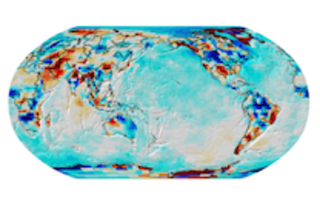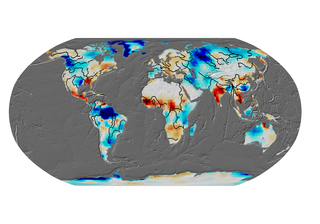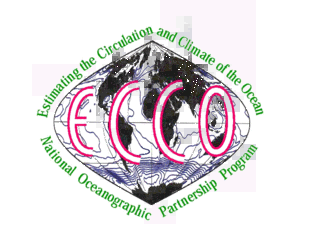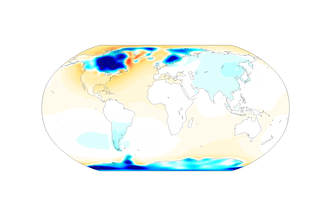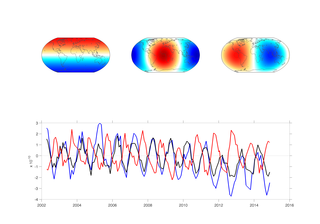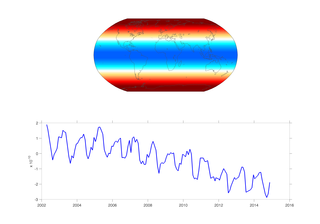-
Global surface mass changes (land + ocean) updated monthly, and is provided on 0.5-degree global grids.
-
This data browser allows the interactive retrieval of GRACE & GRACE-FO Land data over river basins, as well as the evaluation of long-term trends and mean seasonal amplitudes.
-
-
Land water storage from GRACE is updated monthly, and is provided on 1-degree global grids.
-
Ocean bottom pressure from GRACE is updated monthly, and is provided on 1-degree global grids.
-
Global surface mass (land + ocean) from GRACE is updated monthly. Please visit the UT-CSR mascon site for further details.
-
GRACE Monthly Mass Grids - GSFC Global Mascons
This is another GRACE solution using the mascon approach from the team at NASA-GSFC. For details, please visit the GSFC-mascon site.
-
A GRACE-independent forward simulation of monthly land water storage changes (currently using soil moisture, snow, and canopy water). Can be used for comparison and residual groundwater studies.
-
A GRACE-independent forward simulation of monthly ocean bottom pressure changes. Can be used for comparison studies and error analysis.
-
Solid Earth adjustments from the glacial loading of the last ice age produce long term trends in the Earth's gravity field that need to be accounted for to infer contemporary surface mass changes.
-
A purely geodetic MDT estimate constructed in 2008 from the Mean Sea Surface and mean geoid based on GRACE data, other space and in-situ gravity data.
-
The spherical harmonic coefficients of degree 1 represent the distance between the center of mass of the Earth and its 'center of figure', which in practice is the center of a set of tracking stations on the surface of the Earth.
-
The spherical harmonic of degree 2 and order 0 - C(2,0) - is due to the flattening of the Earth. Its technical name is 'Earth’s dynamic oblateness'.
-
Monthly estimates of the time-variable geopotential up to degree and order 5 determined from satellite laser ranging from up to five geodetic satellites.
Data Portal




